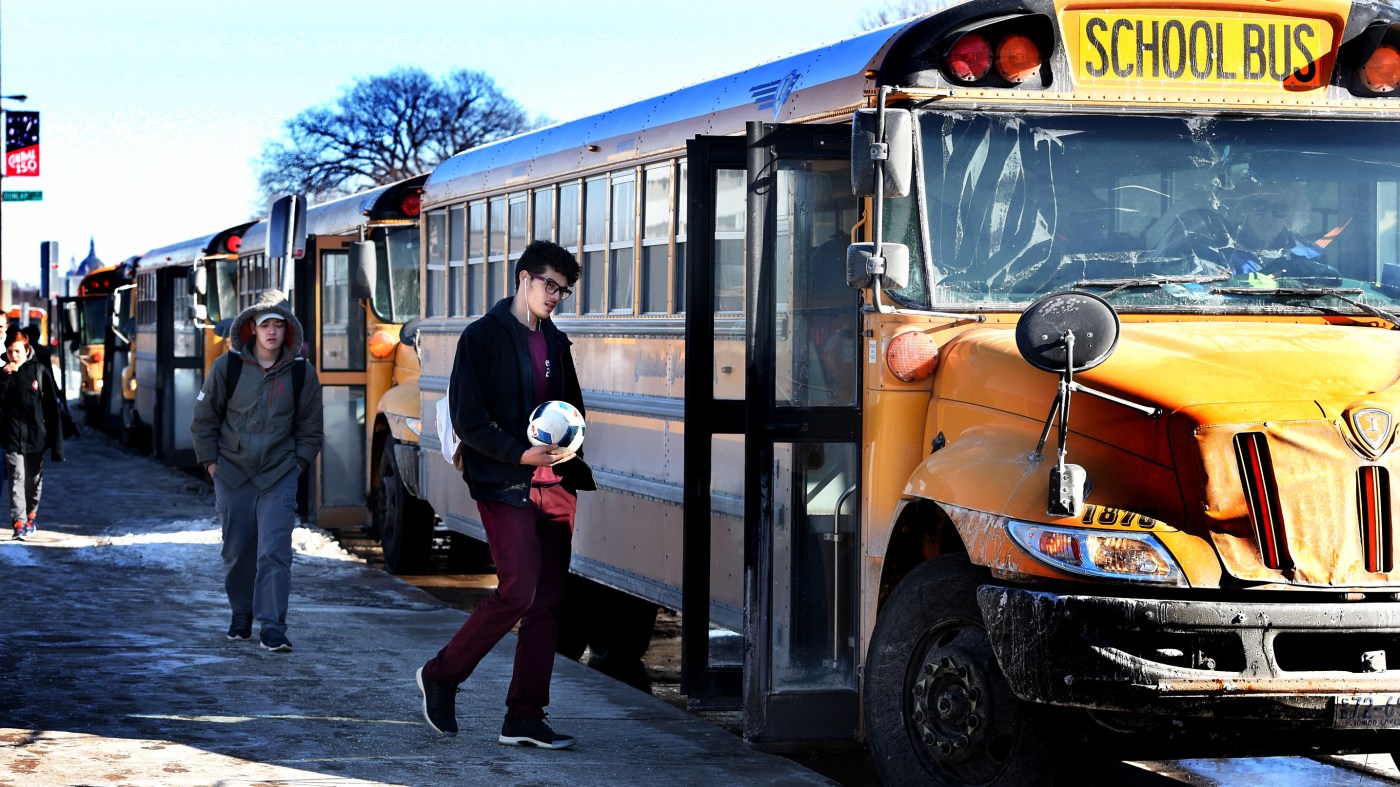
Minnesota schools face shortfalls despite recent boost in state aid
Last year, Democratic-Farmer-Labor majorities in the Minnesota Legislature passed what they billed as historic funding for K-12 education.
School districts across the state saw a total of $2.2 billion in new funding for the 2024-25 two-year budget, a nearly 11% increase over the last state budget. But despite record funding this year, many school districts across the state still face budget shortfalls.
A recent survey by the Association of Metropolitan School Districts found 70% of metro districts in the state expect deficits in the coming year. St. Paul and Minneapolis schools are among them, and their projected shortfalls are among the biggest — $108 million and $90 million, respectively.
Multiple factors are to blame, including the expiration of federal pandemic aid, inflation and declining enrollment. And school districts say the impact of the state funding boost is in part blunted by mandates attached to the new spending, which could eat up about half of their new funding.
“The number of new requirements and initiatives are in total part of what I think our folks are feeling,” said Kirk Schneidawind, executive director of the Minnesota School Boards Association.
Pandemic aid
St. Paul Public Schools saw about $114 million disappear in its 2024 budget due to the end of federal aid, about 14% of the total budget, according to district figures.
A lot of the money from the third and final major pandemic spending bill, the American Rescue Plan, was for addressing lost learning and returning to school safely. In all, Minnesota got about $1.4 billion. But that money is now dried up and many districts have to reduce their budgets accordingly.
Meanwhile, while SPPS enrollment decline has leveled off at around 33,000, it’s still significantly under the 37,000 it was at around a decade ago — a significant issue since state funding is tied to the number of students in a district.
And, as always, there’s inflation, which eats into government budgets. This has been particularly true in the pandemic era and its aftermath, which saw significant growth in costs. The costs of operating a school distinct — paying staff, school bus contracts and insurance have grown as well, Schneidawind said.
Funding mandates
St. Paul schools will get around $56 million in new state funding, softening the blow from the end of pandemic aid and other pressures. But there are strings attached.
Even as the Legislature approved new funding last year, some school district leaders warned mandates from the state would mean that cash could only do so much for schools — though DFL lawmakers and labor maintain the increases would make up for a decades-long decline in state aid.
Around half of the $2.2 billion in extra funding schools got during last year’s legislative session, billed by DFL leaders as “historic,” is tied to mandates on how to spend.
The Minnesota School Boards Association says those mandates on spending create hardships for districts as they try to provide competitive salaries and spend money on facilities and maintenance.
The cost of most of the mandates is small, but when the more than 65 or so are combined, it accounts for about $1.1 billion that must be used for things like literacy programs such as the READ Act, which got about $75 million.
Schools wanted programs like that, Schneidawind said, but funding must be dedicated to new teaching materials and training.
Others included new civics and personal finance class graduation requirements, an ethnic studies requirement, new rules surrounding school discipline and school unemployment aid.
Meanwhile, about $410 million of the new funding is discretionary, meaning districts can use it as they please, according to school boards association analysis.
GOP lawmakers have seized on the mandates to criticize Democrats, who control the Senate, House and governor’s office.
But DFLers have dismissed concerns about the mandates and stick by their education budget. It gave a 4% increase to the per-student state funding formula in 2024-25 — tied to future increases to inflation — as well as a $663 million boost in state aid for special education and boosted English language learner funding by $87 million.
And even as many districts face shortfalls this year, DFLers, labor groups and St. Paul Public Schools say the funding helps bring state education spending closer to where it was 20 years ago.
A peak in per-student funding in 2003
SPPS spokesperson Erica Wacker pointed to a recent study from the labor-affiliated think tank North Star Policy Action, which found per-pupil state aid to Minnesota school districts peaked in 2003. Back then, it was at $14,374 in present-day dollars, but by 2023, that amount trended downward by about $3,000 — roughly 21% less than in 2003.
Those declines have resulted in districts relying more heavily on local property tax levies to support budgets, to the tune of about $1,800 per pupil statewide.
Last year’s funding boost increased state aid by about $1,000 per pupil, according to North Star Policy Action’s research.
St. Paul schools, meanwhile, saw statewide aid drop from $18,122 per student in 2003 to $13,555 in 2024 — a 25% decrease. Last year’s state funding boost brought 2024 funding to $14,730, around a 19% decrease in state aid from 2003.
So while mandates tie up new funding for the district, the new money does put a dent in overall costs, albeit a fraction of what the district needs overall.
If lawmakers want to do anything to address school budget shortfalls and bring education funding up to levels equivalent to those seen 20 years ago, their next opportunity to take any significant action would be in the 2025 legislative session, when they’ll have to pass another two-year budget.
Related Articles
Secretary of state seeks ‘high turnout and low drama’ for Minnesota in November
Joe Soucheray: Do you really want to put more copper wiring on the streets?
It’s not over for legal Minnesota sports betting this year, but chances still murky
Jordan Rodell: Proposed Minnesota social media legislation would undermine First Amendment protections
Gov. Tim Walz says copper wire theft bills are ‘top priority,’ urges legislators to move them forward


